Passion [Madame DuBarry] (1919)
By Toronto Film Society on January 10, 2018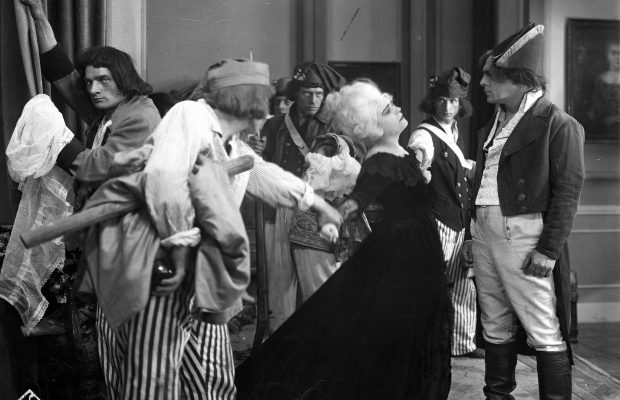
Toronto Film Society presented Passion [Madame DuBarry] (1919) on Monday, February 21, 1966 as part of the Season 18 Monday Evening Silent Film Series, Programme 4.
~~~~~~~~~~~~~~~~~~~~~~~~~~~~~~~~~~~~~~~~~~~~~~
(Main Auditorium, UNITARIAN CHURCH, 175 St. Clair West)
Programme No. 4
Monday February 21, 1966
8:30 pm
:::::::::::::::::::::::::::::::::::::::
The Clever Dummy (1917) (2 reels)
Produced and directed by Mack Sennett
Starring Ben Turpin and Chester Conklin
Excerpt from Gypsy Blood (1918) (c.1 reel)
Original title: Carmen
Released in Germany by Union-UFA: Dec 20,, 1918
Released in U.S.A. by First National: May 8, 1921
Directed by Ernst Lubitsch
From the story by Prosper Merimée
Scenario by Hans Kräly
Photographed by Theodor Sparkuhl
Sets by Karl Machus
English titles by Myron Stearns
Cast:
La Carmencita:……….POLA NEGRI
Don José Navarro:….Harry Liedtke
Escamillo:……………..Magnus Stifter
Passion (1919)
Original Title: Madame DuBarry
Released in Germany by Union -UFA: Sept 19, 1919
Released in U.S.A. by First National: Dec 12, 1920
Directed by Ernst Lubitsch
Scenario by Fred Orbing and Hans Kräly
Photographed by Theodor Sparkuhl
Sets by Karl MachusCostumes by Ali Hubert
English titles by Katharine Hilliker
Cast:
Madame Du Barry…………POLA NEGRI
Louis XV………………………EMIL JANNINGS
Armand de Foix…………….Harry Liedtke
Jean DuBarry………………..Eduard von Winterstein
Duc de Choiseul…………….Reinhold Schünzel
Duc d’Aiguillon……………..Gustav Czimeg
Guillaume DuBarry……….Carl Platen
* * *
Passion deserves a permanent niche in the Hall of Fame if for no other reason than that it started something which didn’t end in a hurry. It was the first German film to be shown in America after the end of World War I, and in spite of the absence of familiar names, and in spite of the strong anti-German sentiment in America (admittedly the film’s origin was disguised at first), the film proved a big hit. It had an unprecedented long run at the Capitol Theatre in New York, and First National, which had paid a mere $40,000 for the American distribution rights (because no other American distributor would touch it) made a killing.
The effect of the this box-office success was far-reaching. American distributors rushed to snap up other German films, particularly any starring Pola Negri or Emil Jannings or directed by Ernst Lubitsch. Among the most notable of these were Gypsy Blood (which had been made prior to Passion), Anna Boyleyn (released as Deception) directed by Ernst Lubitsch with Jannings as Henry VIII, Sumurun (released as One Arabian Night) directed by Lubitsch with himself and Negri in the cast, The Golem (which the Silent Series showed in 1959), and the still famous The Cabinet of Dr Caligari.
Not all of them triumphed at the box-office (Caligari was a succès d’estime only), but the best of them made a big impact on the post-war intellectuals, starved for such adult sophistication in their films; indeed there was a tendency to use these films as a stick for beating Hollywood. The more rural areas were less interested in continental sophistication, and European films probably had little more attraction for them than foreign-language films do today; but the urban centres were impressed, and so was Hollywood. In 1922 Famous Players-Lasky beat out its rivals and signed Pola Negri to a long-term starring contract; and in 1923 Mary Pickford brought Ernst Lubitsch over to direct her Rosita, and he remained in Hollywood for the rest of his life. And thus began a vogue for importing stars and directors (and technicians and supervisors) which lasted at least until sound came in, by which time the German and Scandinavian studios were denuded of their best talent. Germany’s “golden age”, which lasted from around 1919 to roughly 1926, produced films that revolutionized film technique; by that time its best talents had moved to Hollywood (where they were often emasculated), but the direct and indirect effect of the “German invasion” (and of Russian influence) was like a potent vitamin pill for the Hollywood product.
An it was Passion that started it all.
Passion was reviewed in Photoplay Magaine in January, 1921. The reveiwer was Burns Mantle (later to be indelibly associated with the annual “Best Plays” books). We quote his review in its entirety:
Passion, produced in Germany, is a super-production scenically; spectacular and stirring in its employment of scenes from the French Revolution, with great crowds of passion-torn peasants milling about the falling Bastille and guillotine. It has color and dramatic value, and though it is a costume play performed by actors unknown to American audiences, the story is sufficiently human to overcome the handicaps of its foreign origin. With Pola Negri, a Polish actress who is said to be the most popular cinema star on the continent, playing the DuBarry role, and with a cast of competent actors supporting her, it adds novelty to the succession of native films to which we are accustomed.
The title may prove something of a disappointment if you go to see it because of its sexy appeal. It is not excessively physical at any time, nor nearly so daring as many American films. The story picks up Du Barry as a milliner’s apprentice devoted to her citizen lover but eager for finery and admiration and quite willing to barter her charms for wealth and position. Her first conquest is that of the Spanish envoy, whom she leaves to become the mistress, and later the wife, of the dissolute Count Du Barry. Attracting the attention of Louis, who had a keen eye for pretty women, she proudly transfers her allegiance to him, and though in a sense she is still faithful to her lowly lover, effecting his release from prison and forcing his promotion to a captaincy in the army, she is thoroughly consistent in her loyalty to her royal patron. She excites little sympathy at any time, but holds the interest in her tragic fate to the end. Miss Negri is physically attractive, highly emotional, technically facile and dramatically effective.
(Other films reviewed in the January 1921 issue of Photoplay: Nazimova in Madame Peacock; Thomas Meighan in Conrad in Quest of his Youth; Otis Skinner in Kismet; Homespun Folks; William Farnum in Drag Harlan; Lon Chaney and Betty Blythe in Nomads of the North).
Another appraisal of Passion, written many years later, said: “On the debit side could be mentioned the photography which, though possessing depth and clarity, did not have the sparkle of American films due to the fact that backlighting and other devices were not used. Also the continuity was jumpy and had to be smoothed out in clever titling”. (But James Card of the Eastman House film library in Rochester, who recently acquired one of the original 35mm prints, has told me that the 16mm prints don’t begin to do justice to the exciting clarity of the photography in the 35mm print, particularly in the mob scene).
Gypsy Blood was reviewed by Burns Mantle in the June 1921 issue of Photoplay Magazine as follows:
Those who made the acquaintance of Pola Negri in Passion will enjoy meeting her again in Gypsy Blood, though the second picture is considerably less elaborate and a trace less interesting than the first. Here is a straight version of the Merimée “Carmen” played and pictured with a literalness that makes it extremely convincing but robs it entirely of its Latin fire and its pictorial flashiness. This “Carmen”, as played by the intense Negri, is a very real sort of Carmen who refuses to tidy herself up before the camera for the very good reason that Carmen herself was not a tidy person. None of your silk-stockinged Calvés and Farrars, this cigarette girl. None of your fringed-shawl beauties with rouged cheeks and cherry lips. You fell the background strongly; you feel that it is genuine; that this is the real Seville, and these are the real characters around whom the opera was written. It is a good “Carmen”, this Gypsy Blood, because it is new and Mme Negri plays it extremely well. Her supporting cast, again enjoying the blessings of anonymity, is made up of actors quite un-Spanish as to appearance and as colorless as the barren mountain fastnesses in which they cling precariously to the rocks between scenes, but competent and, like the picture, different.
(Other films reviewed in the June 1921 issue of Photoplay: Harry Myers in A Connecticut Yankee; Douglas Fairbanks in The Nut; Marguerite Clark in Scrambled Wives; Wallace Reid in The Love Special. some films reviewed the following month in the July 1921 Photoplay: The Cabinet of Dr Caligari; D.W. Griffith’s Dream Street; Deception; Sentimental Tommy; Jackie Coogan in Peck’s Bad Boy; The Sky Pilot; The Queen of Sheba).
WILL THE REAL MADAME DU BARRY PLEASE STAND UP…
(NOTE: The inconsistent spelling of our heroine’s name throughout these pages is due to our faithfully reproducing our reference material exactly as we found it. But we understand that the French spell it “du Barry” and would look her up in the telephone book under B).
By “adult sophistication”, we don’t mean to imply that Passion is any more accurate about historical events than the average Hollywood film. Persons who know nothing about French history are the only ones who can view Passion without squirming. But we trust we won’t spoil your enjoyment of the film if we offer a few biographical facts gleaned fromt he Encyclopedia Britannica to satisfy your curiosity.
Marie Jeanne Bécu was born on August 19, 1746, the illegitimate daughter of a poor woman of Vaucouleurs, where Marie Jeanne was born. She was placed in a Paris convent at an early age, but doesn’t seem to have learned much but drawing and catechism. When she was 16 she entered a milliner’s shop on the rue St. Honoré, but later lived as a courtesan under the name of Mlle Lange. Somewhere around this time she was discovered by Jean, comte du Barry, who installed her in his house for the purpose of attracting gamblers, whose money he usually won. In this function she proved so successful that, like an ambitious talent agent, he decided to try for the big time: the King himself, who had no official mistress since the death of Mme de Pompadour in 1764. Through the help of Lebel, the king’s valet de chambre, and the duc de Richelieu (who is not to be confused with the Cardinal Richelieu that figures in “The Three Musketeers”), Marie Jeanne met the king, who was instantly captivated by her charms. But protocol required that the king’s official mistress should have a title; so Jean, being already married, prevailed on his brother Guillaume to supply this–for an adequate price. After the marriage ceremony the bride and groom shook hands and parted, never to meet again, and the new Countess du Barry was presented at court on April 22, 1769, and was officially installed as the King’s Mistress.
Her influence over the monarch was absolute until his death, and courtiers and ministers were in favor or disgrace with him in exact accordance with her wishes. The duc de Choiseul, who refused to acknowledge her, was disgraced in 1771; and the duc d’Aiguillon, who had the reputation of being her lover, took his place, and in concert with her governed the monarch”. Among other things, Louis built for her the magnificent mansion of Luciennes. In return for her influence over him she seems to have given the King her honest loyalty, for it is said that when he was dying of smallpox, she was the only one who didn’t desert his bedside through fear of infection.
After Louis’s death in 1774, his successor (his grandson, Louis XVI) banished her to the abbey of Pont-aux-Dames near Meaux, but Marie Antoinette interceded for her, and the following year the king permitted her to live in her Luciennes mansion with a pension. She lived here in retirement with the compte de Cossé-Brissac, and continued to receive distinguished visitors such as Benjamin Franklin and the Emperor Joseph II. (Since they no longer had anything to gain by currying her favor, it would appear that they visited her because they really liked her).
The REvolution knocked her security out from under her, and in 1792 she went to England to try to raise money by the sale of her jewels. Upon her return to France she was arrested and accused before the Revolutionary Tribunal of having dissipated the treasurers of the state, of conspiring against the republic, and of having while in London worn mourning for “the tyrant”. She was condemned to death on December 7, 1793, and was executed that same night (aged 47). The French aristocrats won admiration even from their foes for the superb dignity with which they went to the guillotine; but the Countess du Barry’s nobility was acquired, not born, and in the hour of her death she completely went to pieces and made a cowardly spectacle of herself. Considering that her execution was carried out within a few few hours of her unust death sentence, one can understand that she could hardly have time to pull herself together and recover her poise, while on the other hand, Gallic temperament being what it is, neither would she be too stunned to react. But one can’t help wishing she had made a better exit.
“Her contemporaries, scorning her low birth rather than her vices, attributed to her a malicious political role of which she was at heart incapable, and have done scant justice to her quick wit, her frank but gracious manners, and her seductive beauty”.
LOUIS XV (1710-1774) came to the throne in 1715 at the age of five, upon the death of his great-grandfather, Louis XIV (who had outlived his son, his grandson and his two eldest great-grandsons). When he attained his majority, Louis XV tried to rule absolutely, like his great predecessor; but he had neither the strength of will nor the intellect to do so properly.
When he was 34 his mistress, the Duchess of Chateaurox, was the origin of the one moment of popularity he ever enjoyed, for she urged him to take apersonal part in the current war (the “Austrian Succession” War), and accordingly he went to Metz and by his presence inspired his troops into warding off the enemy (1744). This made him a hero to his countryment, and when he fell ill shortly afterwards there was great distress. The illness was serious enough to scare the hell out of Louis (literally) and upon recovery he piously dismissed his mistress; while the nation, in a delirium of joy, dubbed him “Louis le bein-aimé”, a name which officially clung to him for the rest of his life, though as soon as the intial enthusiasm was over the national love for him began ebbing away again very quickly, and before his death he was thoroughly despised. His piety was shortlived too, for the following year (1745) Madame de Pompadour was installed as his mistress, and she remained in office till her death nineteen years later. (When her youthful charms faded she maintained her position by making sure that Louis was liberally supplied with unofficial mistresses). Whereas Mme du Barry was basically not interested in politics, Pompadour took an active hand in running the country, but although she seems to have had some good effect in matters of philanthropy, letters and art, her influence on public affairs was fatal, and her mishandling of the Seven Years War cost France most of her colonies, including Canada. “After us the Deluge!” she is reported to have said, and she was so right. Louis XV spent his life having fun and spending money; his successor paid for it with his life when the whole structure collapsed.
* * *
POLA NEGRI was born somewhere in Poland. Reference books variously locate her birthplace as Yanowa, Lipno, Poznan (Bromberg) or Warsaw. The year is generally given as 1897 (the the Dictionaire du Cinéma says 1899), on January 3 (some say December 31). Her real name was Appollonia Chalupec (or Chalupiec), and her father is said to have been a gypsy, hwich would at least account for her un-Polish blue-black hair. She is said to have graduated from the Imperial Ballet School in Warsaw (we are suspicious of this), and then to have gone to the Dramatic School for a year.
She made her stage debut in 1912 in the role of Aniela in a play called “Śluby panieńskie” (The Maidens’ Prayers) at the Maly Theatre in Warsaw, under thename of P. Negri (having adpted the surname of the Italian poetess, Ada Negri, whom she admired; the “Pola” of course being the diminutive of her own first name). If her birth year was indeed 1897, she would have been 15 at the time.
In the 1913-14 season she was at the Wielki (Grand) Theatre, appearing in Sumurun, a wordless pantomime play with an Arabian Nights setting which seems to have attracted attention on both sides of the Atlantic in those prewar years; and in the title role of Auber’s opera “La Muette de Portici”. She was also active at the Letni Theatre.
She made her screen debut in 1914 with a German-Polish company. With the exception of the first one, all her Polish films seem to have been directed by Aleksander Hertz.
Polish film (1914-16)
(NB: In the following lists we pass along the titles as they were given to us: in the original language, untranslated; but we have added American-release titles wherever we knew them. Note also that we do not guarantee the chronological order of the titles within any given year).
1914: Niewolnica zmyslów (U.S: The Polish Dancer?) (directed by Jan Pawłowski)
1915: Bestra; Czarna ksiazka (also called Zółty paszport); Pko, Nr 13
1916: Arabella; Jego ostatni czyn; Studenci; Zona
In 1916 the celebrated German director, Max Reinhardt, who had caught her performance of Sumurun in Warsaw, brought her to Berlin to appear in his elaborate production of the same play. She made her German film debut the same year; but the film that established her as a star seems to have been Lubitsch’s Die Augen der Mumie Ma (1918).
German films (1916-1922)
1916: Komtesse Doddy (directed by Lubitsch)
1917: ?
1918: Die Augen der Mumie Ma (The Eyes of the Mummy) (Lubitsch); Carmen (Gypsy Blood)
1919: Madame DuBarry (Passion) (Lubitsch); Kruzigt Sie
1920: Sumurun (One Arabian Night) (Lubitsch); Der gelbe Schein (The Yellow Ticket?); Manja; Marchesa Di’Arminiani
1921: Arma Violetta; Vendetta (also U.S.); Die Bergkatze (The Wildcat)
1922: Die Flamme (also called Montmartre); Die Dame im Glashaus; Die Geschlossene Kiste; Sapho (Mad Love?)
(Four of the foregoing films, which we haven’t as yet identified, were released in the United States in 1922 as The Last Payment, The Red Peacock, The Devil’s Pawn and Intrigue).
When she left Germany toward the end of 1922 to take up her starring contract with Famous Players-Lasky (Paramount) in Hollywood, she was at the crest of her career. But although she reigned as the glamorous queen of the Paramount lot (a title hotly disputed by Gloria Swanson), a succession of weak films sapped her popularity, and though some of her later films were excellent, such as Hotel Imperial (1927) which we showed last year, the reprieve came too late; long before the last film of her contract was released in 1928, her name was longer a selling point. Despite the coincidence of date, it wasn’t talkies that killed Pola Negri; she was dead at the box-office already.
Yet somehow a legend of glamour was left behind. Even people born long afterwards have inherited the impression that Pola Negri was the epitome of the glamorous, sophisticated, continental, exotic, temperamental Movie Queen of the pre-depression era; and come to think of it, who else was?
Hollywood films (Paramount) (1923-1928)
1923: Bella Donna; The Cheat; The Spanish Dancer; (also a brief appearance in a film called Hollywood)
1924: Shadows of Paris; Men; Lily of the Dust; Forbidden Paradise (Lubitsch)
1925: East of Suez; The Charmer; Flower of the Night
1926: A Woman of the World; The Crown of Lies; Good and Naughty
1927: Hotel Imperial; Barbared Wire; The Woman on Trial
1928: The Secret Hour; Three Sinners; The Loves of an Actress; The Woman from Moscow
Although nothing she made in Hollywood duplicated the original impact made by Passion and Gypsy Blood, to which her fans continued to look back in nostalgia, some of her later films were in fact probably much better–but by then so was the whole level of Hollywood films. Throughout the 1920’s Hollywood films underwent an incredible improvement in quality and maturity and technique. To us today a 1961 film is just another film; but in 1928 a 1923 film looked positively antique.
Ernst Lubitsch once declared in an interview (in the early 1930’s): “Pola was arrogant and dominating. But Pola is the greatest actress who came to the cinema… She came to America ahead of time… If Garbo….had come when Pola did she might not have had her great success…”
Which is probably true. In 1923 Hollywood was not yet ready for Pola Negri. Had she waited until 1927, as Emil Jannings did, she might have been luckier.
Since 1928 (German except as noted):
1930: Die Strasse der verloren Seelen (The Way of Lost Souls – an Anglo-German co-production)
1932: A Woman Commands (Hollywood); Fanatisme (France)
1935: Mazurka
1936: Moskau-Shanghai
1937: Madame Bovary; Tango notturno
1938: Die fromme Lüge; Die Nacht der Entscheidung
In 1938 she retired to private life, and was living on the Riviera when the War broke out. In 1941 she managed to wangle permission to return to the United States, which she did on a cargo boat. In Hollywood she appeared in one film:
1943: Hi Diddle Diddle
but it wasn’t followed up. She retired to San Antonio, Texas, with an old woman friend of hers. This woman died in 1963, leaving Pola her Texas mansion and an income. The resulting ripple of local publicity indirect resulted in another brief return to the screen: the script writer who was adapting The Moon-Spinners to the screen for Walt Disney was saying “the role of Madame Habib should be played by somebody very exotic, somebody like Pola Negri…and then happened to see apicture of her in a San Antonio paper. The result was:
1964: The Moon-Spinners
but this hasn’t been followed up as yet either.
* * *

EMIL JANNINGS was (roughly) something of a Peter Sellers or an Alec Guiness in his day, with remarkable ability to present convincingly a whole gallery of characters. But apparently it didn’t come easily to him; he found he couldn’t turn it off at the end of a day’s work and casually turn it on again at the beginning of the next. It was necessary for him to keep in character for the whole of the run of the play or the shooting of the film. This must have wreaked havoc with his social life, but it worked; Emil Jannings still ranks among the great character actors of all time.
His birth is generally given as Brookly, New York, on July 26, 1886; but some reference books say he was born two years earlier in Rorscharch, Switzerland, on July 23 or 26, 1884. The Brooklyn stay was very short, at any rate, for his father died shortly afterwards, and his mother immediately took the children back to Germany.
He made his theatrical debut a few years prior to World War I and worked in various companies. After 1914 he played in Berlin under Max Reinhardt, and around that time began appearing in films as well.
European films (1914-1926)
(German except as noted)
1914: Im Banne der Leidenschaft; Arme Eva; Passionels Tagebuch
1917: Das fidele Gefängnis; Wenn vier dasselbe tun; Der Ehe der Luise Rohrbach; Columbine (1917?)
1918: Die Augen der Mumie Ma (The Eyes of the Mummy); Fuhrmann Henschel (Lubitsch); Heimendes Leben
1919: Rose Bernd; Der Mann der Tat; Madame DuBarry
1920: Anna Boleyn (Deception) (Lubitsch); Danton (All for a Woman) (Buchowetzki); Algol; Kohlhiesels Töchter
1921: Der Stier von Olivera; Der Schädel der Pharanentochter; Die Brüder Karamasoff (Buchowetzki)
1922: Das Weib der Pharao (The Loves of Pharaoh) (Lubitsch); Othello (Buchowetzki); Trägödie der Liebe
1923: Peter der Grosse (Peter the Great) (Buchowetzki); Der Gräfin von Paris
1924: Alles für Geld (which he co-directed); Das grosse Licht; Das Wachsfigurenkabinett (Waxworks) (Paul Leni); Der letze Mann (The Last Laugh) (Murnau); Nju (Husbands or Lovers) (Czinner); Quo Vadis (Italian)
1926: Faust (Murnau)
Released in North America, The Last Laugh and Variety greatly impressed the critics, and the latter was also a smash at the box-office; and inevitably Paramount (which had released Variety) signed up both Jannings and Lya de Putti. As with Negri, the latter wasn’t done right by; but Jannings was very successful, at least at first, and the first two films won him Oscars.
Hollywood films (1927-1929)
1927: The Way of all Flesh
1928: The Last Command (Von Sternberg); The Street of Sin (Stiller); The Sins of the Fathers; The Patriot (Lubitsch)
1929: Betrayed
Back in Germany (1930-1945)
1929: Fighting the White Slave Traffic (German?)
1930: Liebling der Götter; Der Blaue Engel (The Blue Angel) (Von Sternberg; two versions, English and German)
1931: Stürme der Leidenschaft
1933: Die Abenteuer des Königs Pausole (also French version: Les Aventures du Roi Pausole)
1934: Der schwarze Walfisch
1935: Der alte und der jung König
1936: Traumulus
1937: Der zerbrochene Krug; Der Herrscher
1939: Robert Koch, der Bekämpfer des Todes
1941: Ohm Krüger
1942: Die Entlassung
1943: Altes Herz wird wieder jung
1945: Wie ist Herr Belling? (unfinished)
In 1931 he wrote an autobiography: “Theater, Film, das Leben und ich”, which was apparently not published until 1951, after his death.
After the fall of Germany, Jannings was in bad odor for having allegedly made propaganda films on behalf of the Nazi party, which may be why he retired from film activity for the remaining give years of his life. He died at Strobl (Wolfgangsee) on January 2, 1950.
Notes by Fraser Macdonald
(Data on Negri and Jannings obtained from Enciclopedia de Spettacolo)
~~~~~~~~~~~~~~~~~~~~~~~~~~~~~~~~~~~~~~~~~~~~~~~~~~~~~~~~~~~~~~~~~~~~~~~~~~~~~
Our next attraction: Monday March 28: a double bill:
Wallace Reid in Excuse My Dust (1920)
Ivor Novello in The Lodger (1926) (directed by Hitchcock)
(We might as well announce it now: the documentary: Anna Pavlova, promised for the April 18 programme, will not be available after all. We have just received word that the Museum of Modern Art has got into a legal hassle over the film, and has cancelled all bookings on it until the matter has been settled).
You may also like...
-
News

Frances Blau
Toronto Film Society | February 27, 2024On Monday, February 26th, 2024, Toronto Film Society lost longtime friend, supporter, and board member Frances Blau. Known for her sense of humour, her love of film, her generosity,...
-
Special Events

The Ladykillers (1955) at the Paradise Theatre
Toronto Film Society | March 9, 2024Toronto Film Society presents Targets (1968) at the Paradise Theatre on Sunday, April 7, 2024 at 2:30 p.m. Ealing Studios arguably reached its peak with this wonderfully hilarious and...
Programming

Virtual Saturday Night at the Movies
Toronto Film Society | April 11, 2024Toronto Film Society is back in the theatre! However, we’re still pleased to continue to bring you films straight to your home! Beginning Season 73 until now we have...
4-
 Toronto Film Society | March 9, 2024
Toronto Film Society | March 9, 2024
-
 Toronto Film Society | November 6, 2022
Toronto Film Society | November 6, 2022
-
 Toronto Film Society | August 1, 2023
Toronto Film Society | August 1, 2023
Donate to Toronto Film Society – We’re now a Registered Charity!
-
Copyright © 2017 Toronto Film Society.

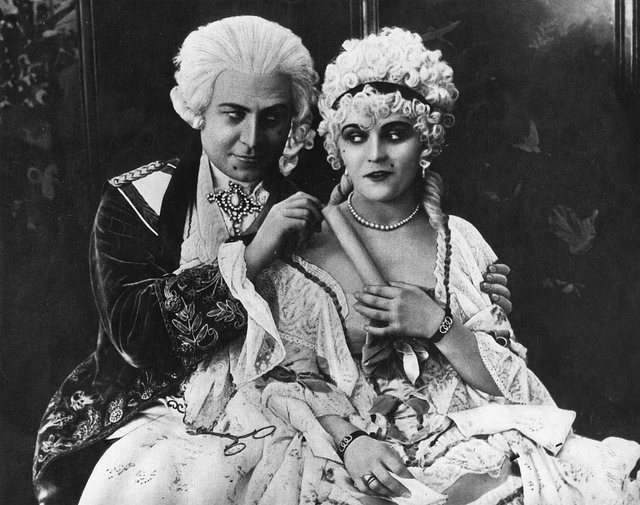
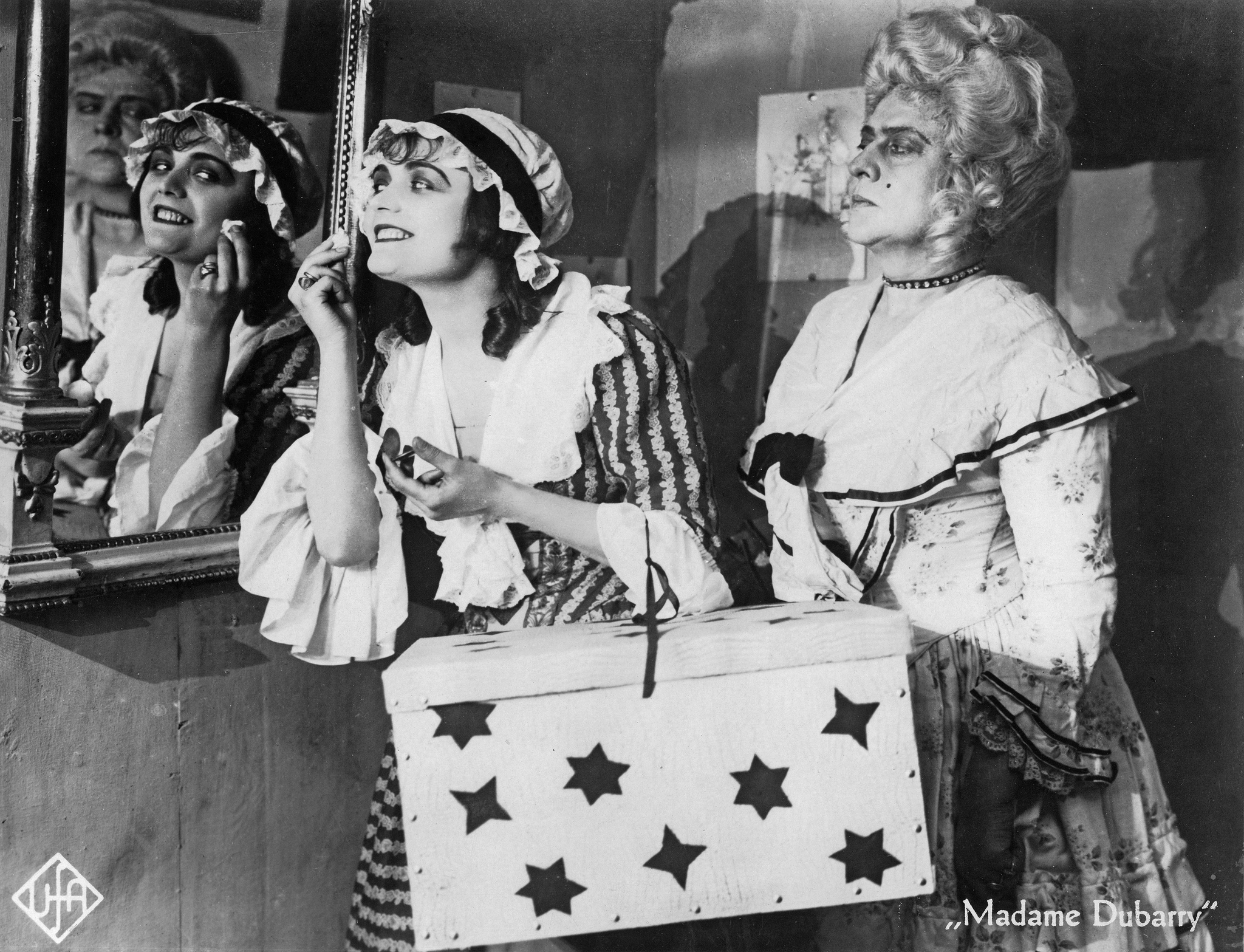
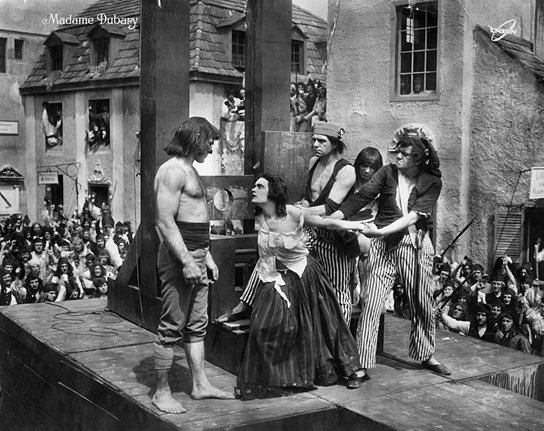
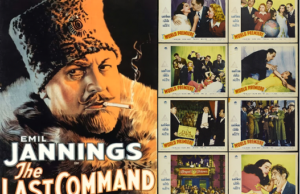
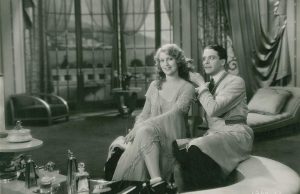
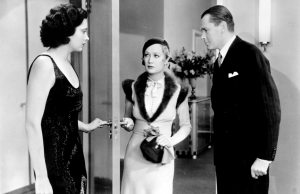
Leave a Reply